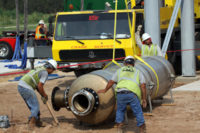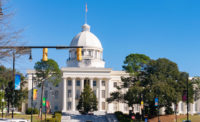The U.S. Dept. of Energy is coming to the aid of states and territories by offering a total of $400 million in formula funding toward the adoption or the update of model energy codes for commercial development. The goal of the DOE grants, which are from $1 billion of the Inflation Reduction Act, is to help increase building energy efficiency and ultimately reduce utility bills—and greenhouse gas emissions.
DOE estimates that updated building codes would eventually result in lower building energy consumption that could save consumers $178 billion in utility bills over 30 years.
“Thanks to President Biden’s Investing in America agenda, this funding will ensure that states and local communities have the tools necessary to lead the way in increasing the performance and the overall health of buildings through energy codes...," Energy Secretary Jennifer Granholm said in a statement.
States have until Nov. 21 to submit a letter of intent to the Dept. of Energy’s Office of State and Community Energy Programs to reserve a share of the money. Applicants will then need to undergo a full application.
The monies may be used for a variety of activities, but are mainly meant to help states implement technical assistance in adopting and implementing the energy codes, a senior Energy Dept. official said during a Sept. 9 press briefing. States can use the money to pay for items such as field studies, analysis and workforce training.
The breakdown is $240 million to help states implement ANSI/ASHRAE/IES Standard 90.1-2019 for commercial buildings and $160 million to implement the zero-energy provisions of the 2021 International Energy Conservation Code (IECC), according to federal guidance on the funding.
ASHRAE 90.1-2019 includes more than 100 changes to items related to a building's envelope, lighting, mechanical systems and its performance rating. The Energy Dept. adopted standards in line with 90.1-2019 for federal buildings last year, which the International Code Council estimated would result in $15 billion in savings over 30 years.
The 2021 IECC adds two appendices with pathways to adopt net-zero energy performance requirements for both residential and commercial buildings.
Through the application process, they will need to show how they will support community engagement, support a skilled workforce and benefit disadvantaged communities, the Energy Dept. official said.






Post a comment to this article
Report Abusive Comment